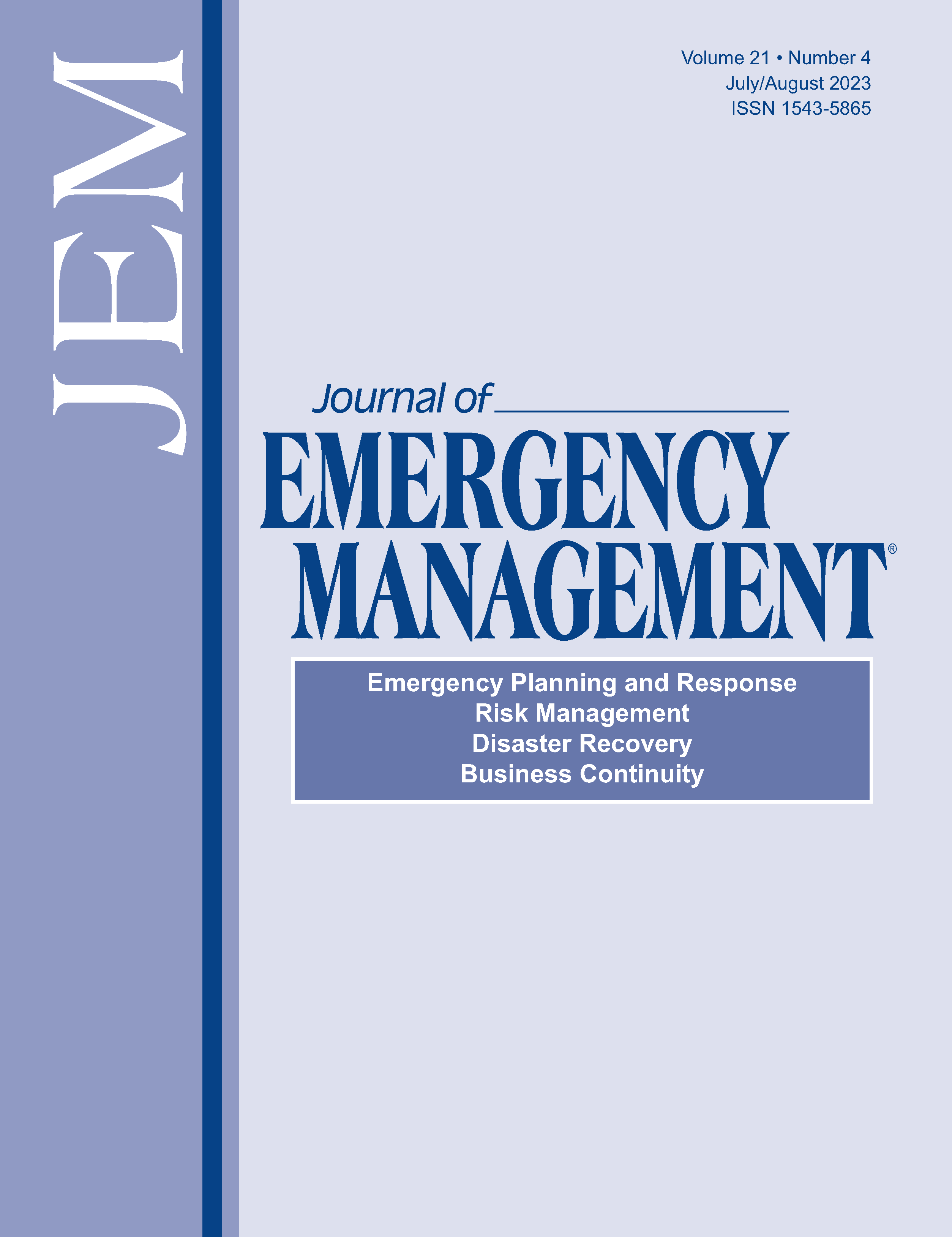A jolt to the system: Quantifying disaster impact and return to routine using citizen-generated calls for service
DOI:
https://doi.org/10.5055/jem.0797Keywords:
social routine theory, time series analysis, emergency dispatch centers, measuring disasterAbstract
This study compares the effect of two different types of incidents on the number of citizen-generated 9-1-1 dispatch center calls and if changes in the call numbers represent a measurable break in the expected rhythm of 9-1-1 calls. Using time series analysis, changes in the normal rhythm of calls for service (CFS) demonstrate that CFS is a good indicator of a disaster event. CFS data may potentially illustrate one aspect of measuring the degree of disaster for an event. This study establishes the value of applying time series analysis to secondary data within the framework of social routine to determine the magnitude disaster impact (or jolt) to a system. The same methodology may also be applied to examine the process of reestablishing system routine or rhythms indicating system recovery as defined as restabilization.
References
Fritz CE: Disasters. In Merton RK, Nisbet RA (eds.): Contemporary Social Problems: An Introduction to the Sociology of Deviant Behavior and Social Disorganization. New York: Harcourt, Brace, and World Inc., 1961: 651-694.
Chen C, Neal DM, Zhou M: Understanding the evolution of a disaster: A framework for assessing crisis in a systems environment (FACSE). Nat Hazards. 2013; 65: 407-422.
Neal DM: Social time and disaster. Int J Mass Emerg Disasters. 2013; 31(2): 247-270.
Hackerott CS: A Jolt to the System: Measuring Disaster-Induced Social Disruption through Water Consumption, Sales Tax Revenue, and Crime Data [PhD Dissertation]. Stillwater, OK: Oklahoma State University, 2016.
Hall ET: The Dance of Life: The Other Dimension of Time. New York: Pantheon Books, 1983.
Quarantelli EL: Catastrophes are different from disasters: Understanding Katrina. 2005. Available at http://understandingkatrina.ssrc.org/quarantelli.
Black L: Why everyday life matters: Class, community, and making life liveable. Sociology. 2015; 49(5): 820-836.
Zerubavel E: Hidden Rhythms: Schedules and Calendars in Social Life. Los Angeles: University of California Press, 1981.
Fischer HW III: Response to Disaster: Fact versus Fiction and Its Perpetuation. 3rd ed. Lanham, MD: University Press of America, 2008.
Decker SH, Varano SP, Greene JR: Routine crime in exceptional times: The impact of the 2002 winter Olympics on citizen demand for police services. J Crim Just. 2007; 35: 89-101.
Chang SE: Urban disaster recovery: A measurement framework with application to the 1995 Kobe earthquake. Disasters 2010. 2010; 34(2): 303-327.
Miles SB, Chang SE: Modeling community recovery from earthquakes. Earthquake Spectra. 2006; 22(2): 439-458.
Karatini Y, Hayashi H: Quantitative evaluation of recovery process in disaster-stricken areas using statistical data. J Disaster Res. 2007; 2(6): 453-464.
Alesch DJ, Arendt LA, Holly JN: Managing for Long-Term Community Recovery in the Aftermath of Disaster. Fairfax, VA: Public Entity Risk Institute, 2009.
Box GEP, Jenkins GM, Reinsel GC: Time Series Analysis: Forecasting and Control. 3rd ed. Englewood Cliffs, NJ: Prentice-Hall Inc., 1994.
Published
How to Cite
Issue
Section
License
Copyright 2007-2025, Weston Medical Publishing, LLC and Journal of Emergency Management. All Rights Reserved.
Leave Nobody Behind: Emergency Management in a More Inclusive Way is a trademark of Journal of Emergency Management






